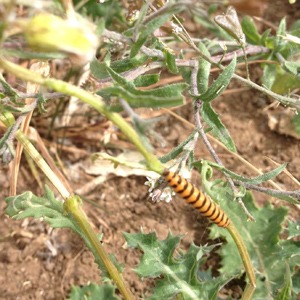 A wise, Brazilian, organic coffee farmer (João Pereira Lima Neto of Fazenda Santo Antonio da Agua Limpa) once said to me that “when nature sees a problem it sends life to fix it but when man see a problem it sends death to kill it.” I find this to be a helpful analogy to put against organic versus non-organic farming; whilst non-organic methods use chemicals to kill off unwanted insects and weeds and disrupt nature’s intricate balance, organic farmers are able to mimic nature and allow life to create natural battles between living organisms.
A wise, Brazilian, organic coffee farmer (João Pereira Lima Neto of Fazenda Santo Antonio da Agua Limpa) once said to me that “when nature sees a problem it sends life to fix it but when man see a problem it sends death to kill it.” I find this to be a helpful analogy to put against organic versus non-organic farming; whilst non-organic methods use chemicals to kill off unwanted insects and weeds and disrupt nature’s intricate balance, organic farmers are able to mimic nature and allow life to create natural battles between living organisms.
Over the weekend I took part in an observation exercise as part of the Permaculture Course that was being run on the farm (more on that soon). During my 45 minutes of static observation I spotted a Cinnabar Caterpillar resting in the sun on one of our Ragwort plants.
We have a lot of Ragwort on our farm in the less cultivated areas and it can be quite hard to control. It’s a very common wild flower and is listed as a weed in Britain and Ireland. Ragwort contains many different alkaloids, making it poisonous to animals and giving it an unpalatable, bitter taste. It has its uses too – in ancient times Ragwort was used as a dye, an aphrodisiac and for relieving pain and inflammation.
These beautiful Cinnabar Caterpillars eat the bitter tasting, alkaloid substances from plants like Ragwort and they assimilate them, becoming unpalatable themselves. Their bright colour acts as a warning to predators that they’re dangerous to eat, and so they survive to become Cinnabar Moths.
Whilst these caterpillars aren’t able to munch their way through all our Ragwort (we have to do our fair share of pulling too!) they offer us an example of a natural cycle that provides a little help in keeping Ragwort under control.
– Laura Jean